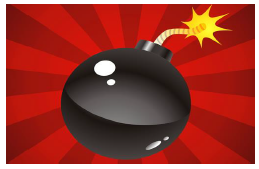Does cartoon violence make kids more aggressive?
(1) Lots of parents question the violence in many of today's cartoons and video games, but many of us grew up watching Tom & Jerry, The Road Runner, and other animated favorites where violence was also a key ingredient.
(2) So was humor – and the reassurance that no matter what happened, no one ever got hurt; at least not fatally. Everything always ended well. In fact, you can argue that aggression and hostility has been the linchpin of cartoons and fairytales forever.
(3) What is Sleeping Beauty without the evil threat of the jealous witch, or Snow White and the Seven Dwarfs without a near-fatal dose of poison that confronts children, perhaps for the first time, with the notion of suddenly losing a loved one?
(4) Research and cartoon violence
(5) Professor L Rowell Huesmann, senior research professor at the Institute for Social Research, University of Michigan, in the USA, says there is little difference between the Tom & Jerry era of cartoons and the violence in cartoons now.
(6) "Except more graphic violence produces more desensitization, " he says. The author of a number of studies on media violence and aggressive behavior in children, Professor Huesmann says there's evidence that exposure to media violence can lead to aggressive behavior and ideas, provocation and anger in viewers.
(7) Australian parenting expert Michael Grose agrees, but says some children are more predisposed to being affected by media violence than others. "Often it depends on what sort of kids they are. Young people who live at the edges, who don't fit in, the loners who spend excessive amounts of time internalizing certain videos – they are more susceptible, " Michael says. He believes cartoons are good for children. "It prepares them. It actually personifies the unknown to them." And it presents conflict, drama and pain in a manner that is indirect and impersonal – it happens to Wile E. Coyote, never to anyone else.
(8) Why today's violence is different
(9) The difference with graphic violent games and cartoons of today, says Michael, is that violence is indiscriminate and often perpetrated by the heroes themselves, for immediate reward. "It brings it out in kids, gives them permission, shows them how to do things. Particularly boys who are more hardwired to do that."
(10) The research community isn't all in agreement, however. Experts such as Professor Jonathan Freedman of the Department of Psychology, University of Toronto, Canada, don't believe media violence is necessarily related to aggressive behavior in children.
(11) In published articles, he questions whether watching violence produces violence or desensitizes people to it. He points to Japanese cartoons, traditionally much more violent than American ones, to back his theory. Japanese are in general, a very polite, non-aggressive people, he has reportedly argued. (...)
Disponível em http://www.schoolatoz.nsw.edu.au/technology/using-technology/does-cartoon-violence-make-kids-moreaggressive. Acesso em: 4/07/2018
